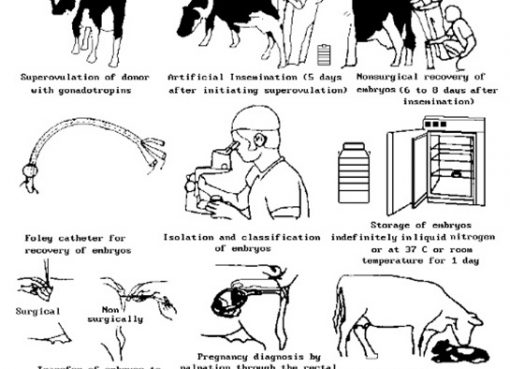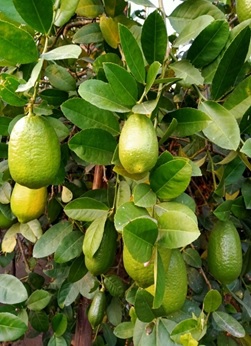Syeda Tamanna Yasmin 1* and Uzma Mazid 1
*1 Research Scholar, Dept. of Microbiology, Assam Don Bosco University, Guwahati, Assam
1 Postgraduate scholar, Dept. of Biotechnology & Bioinformatics, Dibrugarh University, Dibrugarh, Assam
*Corresponding author, Email: syedatamanna60@gmail.com
Abstract
To create crops that can resist severe environmental conditions, it is critical to understand how plants respond to stress conditions. Characterization of several metabolic pathways involved in plant resistance and response to abiotic stressors was made possible by the discovery of proteomics. The use of mass spectrometry has been widespread due to its high throughput capacity and ability to examine plant protein expression under specific environmental conditions. Recent research has used proteomics techniques, such phosphoproteomics, to comprehend metabolic dynamics and controls. Isobaric tags, such as iTRAQ, have been employed to achieve more exact and accurate results and quantitative analysis that takes less time. Although studies using the tomato (Solanum lycopersicum) have successfully used these proteomic techniques, a significant obstacle to crop proteomics is the dearth of genetic functional data when compared to the model plant, Arabidopsis thaliana. Tomato has remained a model crop for genetic and molecular study of the Solanaceae family due to its diploidy, ease of genetic transformation, and abundance of genetic resources. Better methods to expand the genetic and proteomic resources of the tomato are desperately needed.
Keywords: Solanaceae Family, Tomato, Proteomics, plants, environment.
Introduction
The analysis of global gene products in diverse tissues and cell physiological states is made possible by proteomics. With the progress of genome sequencing and protein mapping, proteomics has become one of the most important fields for studying functional genomics [1], with the most publications of any omics discipline in recent years. Humans and cancer research have been the main subjects of the bulk of proteomics investigations [2]. Although agricultural growth has been a recurrent theme in discussions about food security, plant research funding has not yet reached the same level as human proteomics, limiting access to new technologies. The significance of employing proteomics to research the dynamic and complex plant proteomes depends on the identification of proteins and its alterations in stressful settings to produce crop improvement [3]. Due to the growing significance of the tomato as a model plant in crop proteomics and the significance of agricultural development for crop improvement, the proteomics research connected to stress conditions on tomato plants is discussed in this review.
The tomato genome and proteome databases
Because of its fast generation period, basic diploid genetics, well-established genetic transformation technology, tolerance of inbreeding, and enormous, well-characterized genetic resource, tomato in the Solanaceae family that has undergone the most extensive research [4]. The tomato genome has been studied using a variety of datasets, including collections of wild tomato species and mutant germplasm, marker collections, F2 synteny and a permanent recombinant inbreed (RI) mapping population, BAC libraries, an advanced physical map, TILLING populations, tomato microarrays, gene-silencing tomato lines, and VIGS libraries (for transient silencing) [4]. The sequencing of a tomato’s whole genome (Solanum lycopersicum) was an initiative of the Tomato Genome sequencing project that was finished in 2012. Over 90 research institutes have established a consortium [5]. Cultivar Heinz 1706 (H1706) has a genome with 12 chromosomal pairs, 950 Mb in size, and 35,000 genes in total contrasted with the Sorghum and Arabidopsis genomes contain less high-copy, retrotransposons with a longer full-length long terminal repeat (LTR) fewer insertions of (2.8 compared to 0.8 million years ago) higher-frequency k-mers [7].
Stress-related proteomics of plants
Creating plants that can withstand stress is a crucial stage in the food security context. An extensive analysis of gene networks and the role of regulons in plant response is crucial to properly balance the development of the plant, adaptability, and energy [6]. Numerous scholarly reviews have examined the subject of plant stress response [8]. Biological (plant-pathogen interactions) or abiotic stress situations are the two main categories (extreme temperatures and light intensity, drought, salinity, and toxicity). The signalling pathways interact with the stress responses to some extent.
Abiotic stress
Abiotic stress is managed by plants by either avoiding it or adapting to it. Stress adaptation involves altering plant metabolism, which is brought on by major changes in gene expression [9]. The standard method for analyzing agricultural abiotic stress is to contrast plants in various stress situations with those in an ideal state (control). A different tactic is to compare several genotypes (tolerant vs. control).
Temperature
Tomato leaves under high-temperature stress were reported to lose starch due to increased hydrolysis and diminished biosynthetic processes [10]. High-temperature stress alters the structure of the thylakoids, affects how the grana stack or swell, and reduces PSII antenna at the chloroplast level [10]. Heat stress can affect any photosynthetic response [11]. The thylakoid membrane’s carbon metabolism and the stroma’s photochemical pathways are the first to suffer harm. PSII and the oxygen evolving complexes are also significantly impacted.
Light
High light stress conditions have been reported to harm photosystems, particularly photosystem II (PSII). Photoinhibition of PSII and a decline in photosynthetic quantum yield are caused by the surplus energy that cannot be used for carbon fixation and oxygen synthesis [12]. While the formation of superoxide and hydroxyl radicals close to the acceptor site of PSI produces oxidative damage to chloroplast lipids and proteins, the singlet oxygen radicals near PSII can permanently impair the D1 protein.
Virus
Studying the tomato plant’s resistance to the tobacco mosaic virus (TMV) is one of the few types of research that addresses viral pathogens [13]. When the TMV infects tomato and tobacco plants, it spreads to the neighbouring cells via plasmodesmata, multiplies under the supervision of the viral genome, and ruptures cells as a result.
Other proteomic methodologies
- Post translational modifications – PTM
- Protein-protein interaction
Current challenges for tomato proteomics
Proteomics in agriculture has gradually embraced the modern proteomics approaches. Although the pace at which new technologies are adopted in the plant world is not like that of human proteomics, recent publications have been using quicker mass spectrometers, phosphoproteomics research, and tagged techniques (iTRAQ) [14]. Analysis of non-model plant proteomics data is difficult due to inadequate protein annotation, which leaves many proteins uncharacterized or with mismatched spectra, which restricts the interpretation of the data.
Conclusions
The more protein annotation that is collected and made publicly available, the nearer we will be to being able to understand the proteomics data from non-model plants, particularly from crops. As such, it is strongly advised to share sequences and structural information of plant proteins in the protein identification databases in the public domain.
References:
- Hattori, M.; Frazier, J. and Miles, H.T. (1975). Poly (8-aminoguanylic acid): Formation of ordered self-structures and interaction with poly (cytidylic acid). Biochemistry, 14(23): 5033–5045. https://doi.org/10.1021/bi00694a002.
- Kwon, Y.W.; Jo, H.S.; Bae, S.; Seo, Y.; Song, P.; Song, M. and Yoon, J.H. (2021). Application of Proteomics in Cancer: Recent Trends and Approaches for Biomarkers Discovery. Frontiers in Medicine8: 747333. https://doi.org/10.3389/fmed.2021.747333.
- Lalitha, K. and Radhakrishnamurty, R. (1975). Response of alanine, tyrosine & leucine aminotransferases to dietary pyridoxine & protein in rat tissues. Indian Journal of Experimental Biology, 13(2): 149–152.
- Wu, F. and Tanksley, S.D. (2010). Chromosomal evolution in the plant family Solanaceae. BMC Genomics, 11: 182. https://doi.org/10.1186/1471-2164-11-182
- Korelitz, B.I. and Sommers, S.C. (1975). Responses to drug therapy in ulcerative colitis. Evaluation by rectal biopsy and histopathological changes. The American Journal of Gastroenterology, 64(5): 365–370.
- Zhu, J.K. (2016). Abiotic Stress Signaling and Responses in Plants. Cell, 167(2): 313–324. https://doi.org/10.1016/j.cell.2016.08.029
- Sanvordeker, D.R. and Dahani, E.Z. (1975). In vitro adsorption of diphenoxylate hydrochloride on activated charcoal and its relationship to pharmacological effects of drug in vivo. Journal of Pharmaceutical Sciences, 64(11): 1877–1879. https://doi.org/10.1002/jps.2600641129
- Dos Santos, T.B.; Ribas, A.F.; De Souza, S.G.H.; Budzinski, I.G.F. and Domingues, D.S. (2022). Physiological Responses to Drought, Salinity, and Heat Stress in Plants: A Review. Stresses, 2(1): 113–135. https://doi.org/10.3390/stresses2010009
- Haveman, J. and Lavorel, J. (1975). Identification of the 120 mus phase in the decay of delayed fluorescence in spinach chloroplasts and sub-chloroplast particles as the intrinsic back reaction. The dependence of the level of this phase on the thylakoids internal pH. Biochimica Et Biophysica Acta, 408(3): 269–238. https://doi.org/10.1016/0005-2728(75)90129-2
- Halaris, A.E.; Belendiuk, K.T. and Freedman, D.X. (1975). Antidepressant drugs affect dopamine uptake. Biochemical Pharmacology, 24(20): 1896–1897. https://doi.org/10.1016/0006-2952(75)90412-8
- Fahnestock, S.R. (1975). Evidence of the involvement of a 50S ribosomal protein in several active sites. Biochemistry, 14(24): 5321–5327. https://doi.org/10.1021/bi00695a016
- Dupont, J.; Dupont, J.C.; Milon, H. and Froment, A. (1975). Spontaneous mortality and vascular lesions in 3 rat strains with different blood pressure levels. Comptes Rendus Hebdomadaires Des Seances De l’Academie Des Sciences. Serie D: Sciences Naturelles, 280(13): 1637–1640.
- Chow, Y.W.; Pietranico, R. and Mukerji, A. (1975). Studies of oxygen binding energy to hemoglobin molecule. Biochemical and Biophysical Research Communications, 66(4): 1424–1431. https://doi.org/10.1016/0006-291x(75)90518-5
- Fido, R.J.; Mills, E.N.C.; Rigby, N.M. and Shewry, P.R. (2003). Protein Extraction from Plant Tissues. In P. Cutler, Protein Purification Protocols, Vol. 244, pp. 21–28, Humana Press. https://doi.org/10.1385/1-59259-655-X:21.




